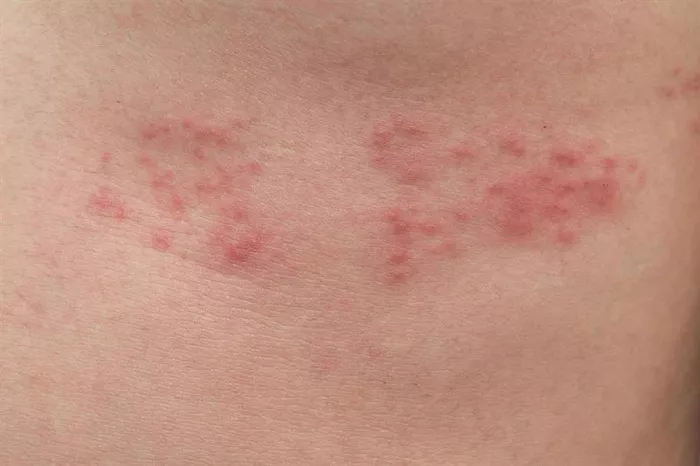Shingles, also known as herpes zoster, is a viral infection that causes a painful rash. It is the reactivation of the varicella-zoster virus, which also causes chickenpox. One of the most common and distressing symptoms of shingles is the burning pain, which can be intense and long-lasting. In this article, we will explore the factors that influence the duration of this pain, the typical timeline for recovery, and the available treatment options to alleviate discomfort.
The Nature of Shingles Pain
Shingles pain is often described as burning, tingling, or stabbing. This pain, known as postherpetic neuralgia (PHN) when it persists after the rash has healed, can significantly affect a person’s quality of life. Understanding the nature of this pain is crucial to comprehending why it lasts and how it can be managed effectively.
The pain associated with shingles can be divided into three phases:
- Prodromal Pain: This occurs before the rash appears and can be mistaken for other conditions. It is usually localized to the area where the rash will develop.
- Acute Pain: This phase starts with the appearance of the rash and can last for about 3 to 5 weeks. The pain is typically severe and can interfere with daily activities.
- Chronic Pain (Postherpetic Neuralgia): If the pain persists for more than 3 months after the rash has healed, it is classified as postherpetic neuralgia. This phase can last for months or even years.
Factors Influencing the Duration of Shingles Pain
Several factors can influence how long the burning pain of shingles lasts. These include:
- Age: Older adults are more likely to experience prolonged pain. The immune system weakens with age, making it harder to combat the virus effectively.
- Severity of the Rash: A more severe rash can lead to more intense and long-lasting pain.
- Location of the Rash: Pain can be more severe and persistent if the rash occurs on the face, particularly around the eyes.
- Timeliness of Treatment: Early treatment with antiviral medications can shorten the duration of the acute phase and reduce the likelihood of developing PHN.
- Individual Health Factors: Pre-existing health conditions, such as diabetes or immunocompromising diseases, can prolong the recovery process.
Timeline of Shingles Pain
The typical timeline for shingles pain varies widely among individuals. Here’s a general outline:
- Prodromal Phase: This phase can last from 1 to 5 days before the rash appears. Pain during this phase is often the first indication of shingles.
- Acute Phase: This phase usually lasts between 2 to 4 weeks. The rash progresses from red patches to fluid-filled blisters that eventually crust over and heal. Pain is most intense during this time.
- Postherpetic Neuralgia (PHN): For some, pain can persist long after the rash has healed. About 10-18% of shingles patients will develop PHN, and the pain can last from a few months to several years. The risk of developing PHN increases with age, particularly in those over 60.
SEE ALSO: Does the Shingrix Vaccine Hurt?
Managing Shingles Pain
Effective management of shingles pain involves a combination of antiviral medications, pain relief strategies, and supportive care.
- Antiviral Medications: Antiviral drugs such as acyclovir, valacyclovir, and famciclovir are most effective when started within 72 hours of the rash appearing. These medications can help to reduce the severity and duration of the acute phase of shingles.
- Pain Relief: Managing the burning pain of shingles can be challenging. A multi-faceted approach is often required, including:
- Topical Analgesics: Lidocaine patches or capsaicin cream can provide localized pain relief.
- Oral Medications: Over-the-counter pain relievers like acetaminophen or ibuprofen may help. For more severe pain, prescription medications such as gabapentin, pregabalin, or opioids may be necessary.
- Antidepressants: Certain antidepressants, like amitriptyline, can be effective in managing nerve pain.
- Corticosteroids: These may be used in some cases to reduce inflammation and pain, though their use is somewhat controversial and should be carefully considered by a healthcare provider.
- Supportive Care: Keeping the affected area clean and dry, applying cool compresses, and wearing loose-fitting clothing can help to minimize discomfort during the acute phase.
Long-term Management and Coping Strategies
For those who develop PHN, long-term pain management strategies are essential. This can include:
- Physical Therapy: Gentle exercises and stretches can help maintain mobility and reduce stiffness.
- Psychological Support: Chronic pain can lead to depression and anxiety. Counseling or support groups can be beneficial.
- Lifestyle Modifications: Incorporating stress-reducing activities such as yoga, meditation, or tai chi can improve overall well-being and pain management.
Preventive Measures
Vaccination is a key preventive measure against shingles and its associated pain. The Shingrix vaccine is highly effective in preventing shingles and reducing the risk of PHN. It is recommended for adults over 50, even if they have previously had shingles or received the older Zostavax vaccine.
Conclusion
The duration of burning pain associated with shingles can vary significantly based on individual factors and the timeliness of treatment. While the acute phase of pain typically lasts a few weeks, postherpetic neuralgia can persist for months or even years. Early intervention with antiviral medications, combined with effective pain management strategies, can significantly reduce the severity and duration of shingles pain. Vaccination remains the best preventive measure to avoid the debilitating pain of shingles.
Understanding the complexity of shingles pain and adopting a comprehensive approach to treatment can help those affected manage their symptoms more effectively and improve their quality of life. As research continues to evolve, new treatments and strategies may offer even better outcomes for those suffering from this painful condition.
Related Topics:



























